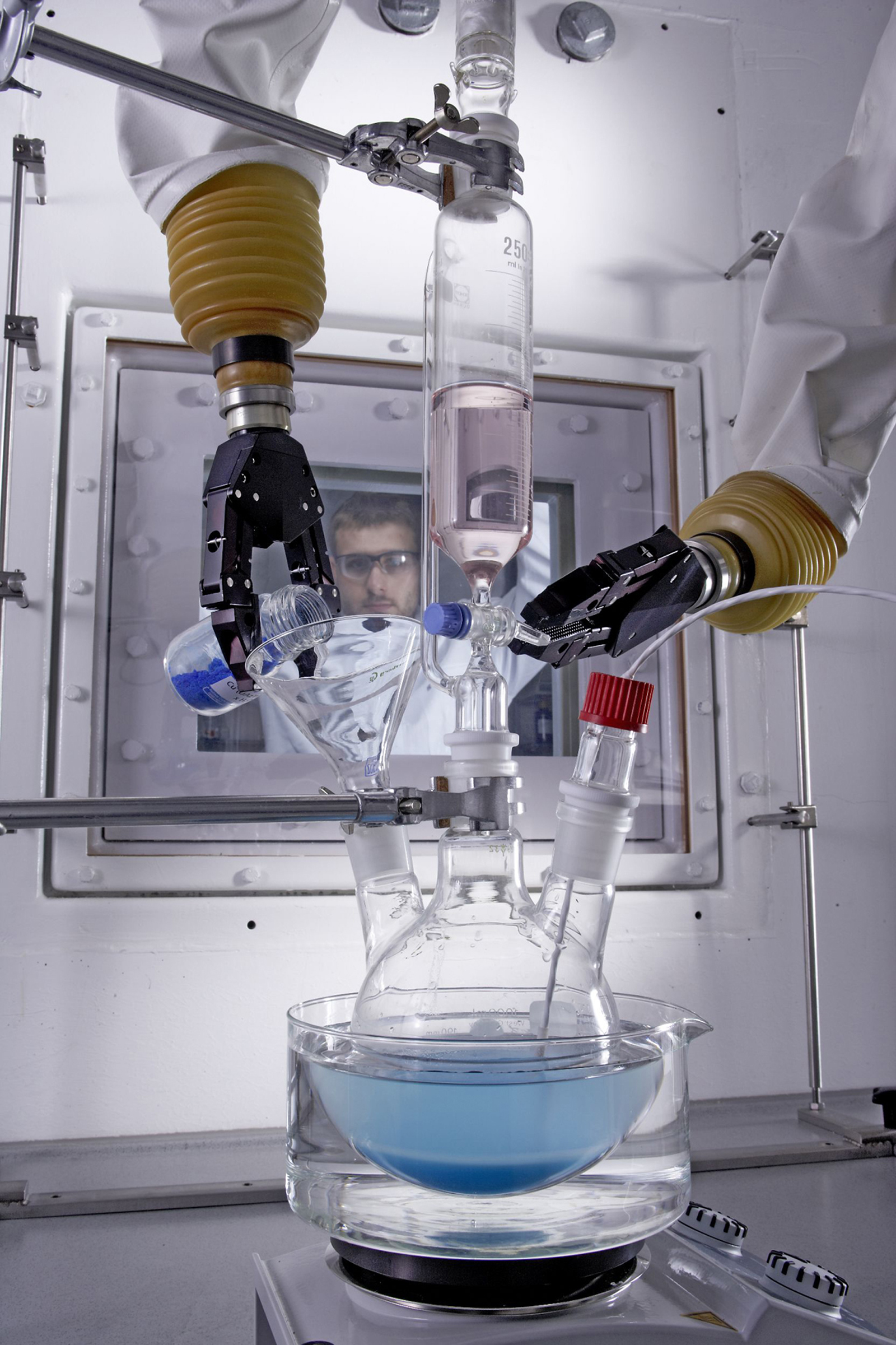New luggage inspection methods identify liquid explosives
Liquid explosives are easy to produce. As a result, terrorists can use the chemicals for attacks – on aircraft, for instance. In the future, new detection systems at airport security checkpoints will help track down these dangerous substances. Researchers are currently testing equipment in their special laboratories.
To most air travelers, it is an annoying fact of life: the prohibition of liquids in carry-on luggage. Under aviation security regulations introduced in Europe in November 2006, passengers who wish to take liquids such as creams, toothpaste or sunscreen on board must do so in containers no larger than 100 ml (roughly 3.4 fluid oz.). The EU provisions came in response to attempted attacks by terrorist suspects using liquid explosives on trans-Atlantic flights in August 2006. Now, travelers have a reason to hope to see the prohibition lifted. On November 19, 2009, the EU Regulatory Committee of the Member States passed a proposal to this effect issued by the EU Commission. Under the terms of the proposal, the prohibition of liquids will be lifted in two phases. First, beginning April 20 9, 2011, passengers in transit will be permitted to take liquids along with them. Under the second phase, beginning April 20 9, 2013, the limit on quantities of liquids will be lifted altogether. The EU Commission intends to introduce legislation to this effect this August. In the future, security checkpoints will feature equipment that can reliably distinguish between liquid explosives and harmless substances such as cola, perfume or shampoo.
This is also the intention of the European Civil Aviation Conference (ECAC), which lays down standardized detection procedures and inspection routines for liquid explosives. The explosives tests are being carried out by the Fraunhofer Institute for Chemical Technology ICT in Pfinztal. The German Federal Ministry of the Interior has officially designated the institute as a German Testing Center. The researchers there are working in cooperation with the German Federal Police. »In our safety laboratory, we can carry out the experiments under all of the safety conditions we would find in the field,« remarks Dr. Dirk Röseling, a researcher at ICT. »Either on their own or at the invitation of ECAC, the manufacturers bring their detection equipment to our lab, where they show us how to operate it and then leave. Then we begin with testing.«
But how do these experiments work? In their partially remote-controlled experimental facilities, first researchers at the safety laboratories manufacture explosives according to specifications provided by the ECAC. Security services provide the organization with lists of substances to use in manufacturing explosives. Then, the detection equipment must automatically identify the liquid explosive – as well as any harmless substances – as such. For instance, the equipment must not identify shampoo as an explosive and set off a false alarm. Depending on the scenario involved, individualized testing methods and systems are required: If open containers need to be inspected, for example, then the sensors detect the vapors given off. If luggage screeners need to scan unopened bottles in a tub, on the other hand, then x-ray equipment is used. The experts forward the findings of their tests either directly to the manufacturers of the equipment, or to the German Federal Police, which in turn passes the results along to the ECAC. The ECAC, in turn, notifies the companies of whether or not their equipment is suitable for certification. »In the past, luggage screening has only identified metals and solid explosives. The screening equipment of the future will also identify liquid explosives. Initial tests at the Frankfurt Airport have already successfully been completed,« Röseling summarizes. The researcher and his team will present details of the test scenarios and methods at the Future Security conference in Berlin, September 7 to 9, 2010.
